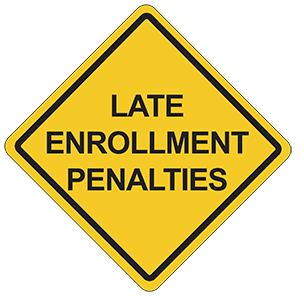What You Need to Know About Medicare
This Medicare information section is here to help you understand your insurance options and provide you with the resources you need to help you select the right plan for your unique needs.
What is Medicare?
Medicare is the U.S. government’s largest health insurance program, serving more than 66 million people.1 It is run by the Centers for Disease Control, part of the U.S. Department of Health and Human Services. Original Medicare is designed to cover a portion of your healthcare costs. See Original Medicare: Out-of-Pocket Costs at a Glance
An Original Medicare beneficiary can visit any provider or facility that accepts Medicare.
Medicare is a health insurance program for:
- People age 65 or older,
- People under age 65 with certain disabilities, and
- People of all ages with End-Stage Renal Disease (permanent kidney failure requiring dialysis or a kidney transplant) or ALS.
Medicare has:
Part A Hospital Insurance – Most people don’t pay a premium for Part A because they or a spouse already paid for it through their payroll taxes while working. Medicare Part A (hospital insurance) helps cover:
- Inpatient care in hospitals, including critical access hospitals, and skilled nursing facilities (not custodial or long-term care)
- Hospice care and some home health care
- Beneficiaries must meet certain conditions to get these benefits
If you have not worked 40 quarters (10 years) you will probably pay a premium for Part A.
Part B Medical Insurance – Most people pay a monthly premium for Part B. Medicare Part B (medical insurance) helps cover:
- Doctors’ services and outpatient care
- Services of physical and occupational therapists
- Some home health care
- Labs and other diagnostic services when they are medically necessary
Part C Medicare Advantage Plans — These bundled plans, include Part A, Part B, and usually Part D and are an alternative to Original Medicare. The plans may have:
- Lower out-of-pocket costs
- Extra benefits that Original Medicare doesn’t cover
- Maximum out-of-pocket expense (MOOP). This is the maximum amount of healthcare costs (excluding prescription drugs) that you will be required to pay annually. Once the MOOP is satisfied, the plan pays the rest of your Medicare-approved costs for the year.
By law, a Part C plan must cover at least the benefits offered by Original Medicare.
Part D Prescription Drug Coverage – Medicare Prescription Drug Coverage is insurance provided by private companies that is available to everyone with Medicare. This coverage helps:
- Lower prescription drug costs
- Protect against higher costs in the future
Most beneficiaries will pay a monthly premium. Most plans have a yearly deductible and require a copay or co-insurance cost sharing for medications.
1 Centers for Medicare & Medicare Services. www.data.cms.gov
Click here or call 941/704-6343 to contact a licensed agent.
We do not offer every plan available in your area. Currently we represent nine organizations which offer 76 products in your area. Please contact Medicare.gov, 1-800-MEDICARE, or your local State Health Insurance Program (SHIP) to get information on all of your options.


